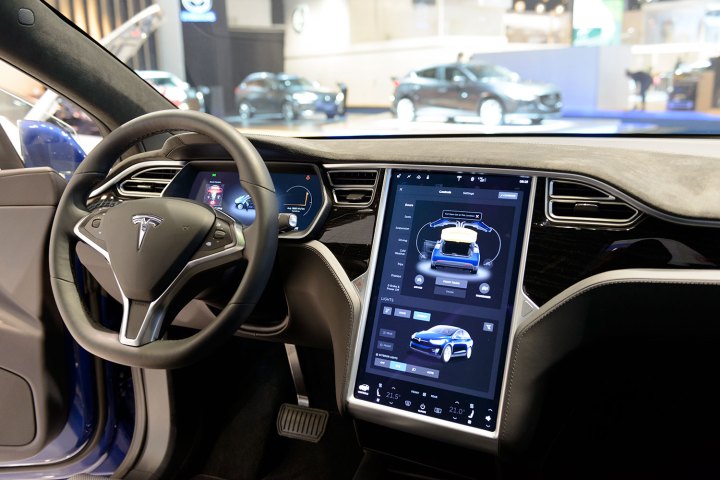
Update 5/24/19: Consumer Reports clarified its position on Tesla’s automatic lane change functionality on Twitter early Thursday. Later that day, Consumer Reports senior director of auto testing Jake Fisher appeared on CNBC to further clarify CR’s position on the functionality.
Last month’s updates to the Navigate on Autopilot feature for Tesla vehicles, which enabled automatic lane changing, may put you at risk of a ticket — or in danger of an accident, Consumer Reports warned on Wednesday
Testers found that reaction times considerably lagged what a human could do, including cutting off cars without sufficient space or passing in ways that could violate the law.
On test runs, the car would often pass on the right (a ticketable offense in many states), and frequently cut off drivers after doing so. It also was reluctant to merge into heavy traffic, and if it did, the vehicle would needlessly apply the brakes, essentially brake-checking the person behind. In these situations, the driver had to intervene to prevent the car from putting passengers and other drivers at risk.
“It’s incredibly nearsighted,” Consumer Reports senior director of auto testing Jake Fisher says. Other issues included a failure to react to brake lights or turn signals, and the inability to anticipate the actions of other drivers.
There was no indication by Consumer Reports on the number of miles driven, or whether the issues were on every automatic lane change, or just in select situations.
Consumer Reports also seems to suggest that the feature is a key part of the new Navigate on Autopilot update, which isn’t necessarily the case. The user still confirms lane changes by default. Tesla noted that update only adds the capability to override this feature, which has already been used over “millions of miles” by drivers. Also, users overriding the suggestion feature are presented with the following message on their screens before confirming the change:
This does not make your vehicle autonomous. You must continue to keep your hands on the wheel and monitor the vehicle’s surroundings. Lane changes may happen quickly at any time and you must remain in control.
The carmaker also appears to still be on track to have fully autonomous cars on the road by the end of this year, and no indication was given Wednesday that there were any changes to those plans.
This isn’t the first time Consumer Reports sounded the alarm over Autopilot: It repeatedly asked Tesla to reconsider its ambitious plans to bring full autonomy to the vehicle and recently scored Cadillac’s Super Cruise system above Tesla’s Autopilot. Super Cruise requires significantly more human interaction, however, only keeping the car centered in its lane and at a safe speed and distance, and is more strict in when it will allow the car to be controlled autonomously.
Consumer Reports advocacy vice president David Friedman did not mince words when giving a verdict on the latest update. “Tesla is showing what not to do on the path toward self-driving cars: Release increasingly automated driving systems that aren’t vetted properly,” he says.
Tesla countered Consumer Reports’ claims by noting that since the debut of the Model S in 2012, Tesla has released “hundreds of over-the-air updates to customers that have made their cars smarter, faster, safer and more enjoyable to drive.”
Editors' Recommendations
- Tesla’s Autopilot can be easily tricked, engineers find
- Cadillac Super Cruise vs. Tesla Autopilot
- Andrew Yang broke Tesla’s one big Autopilot rule in campaign commercial


